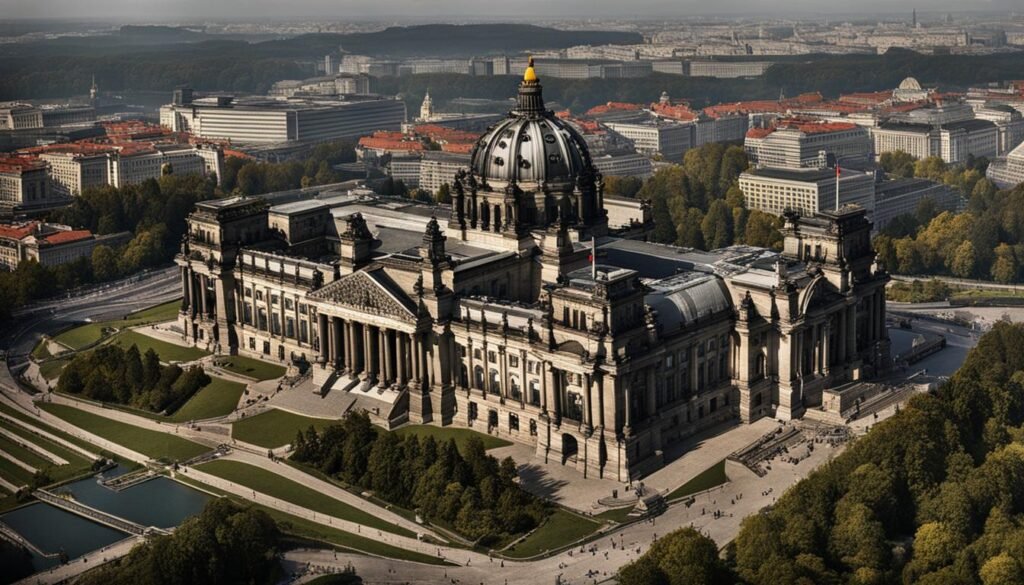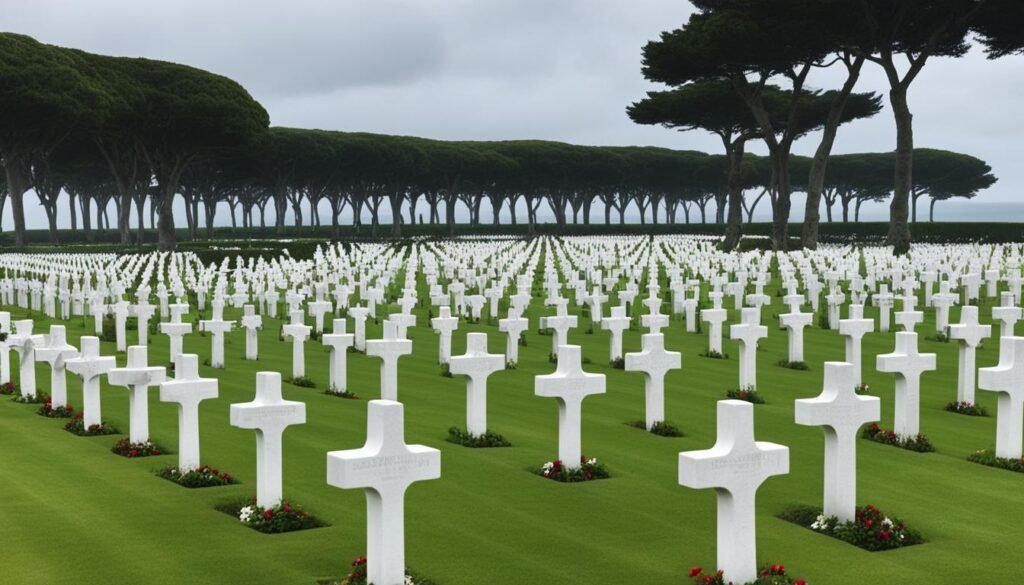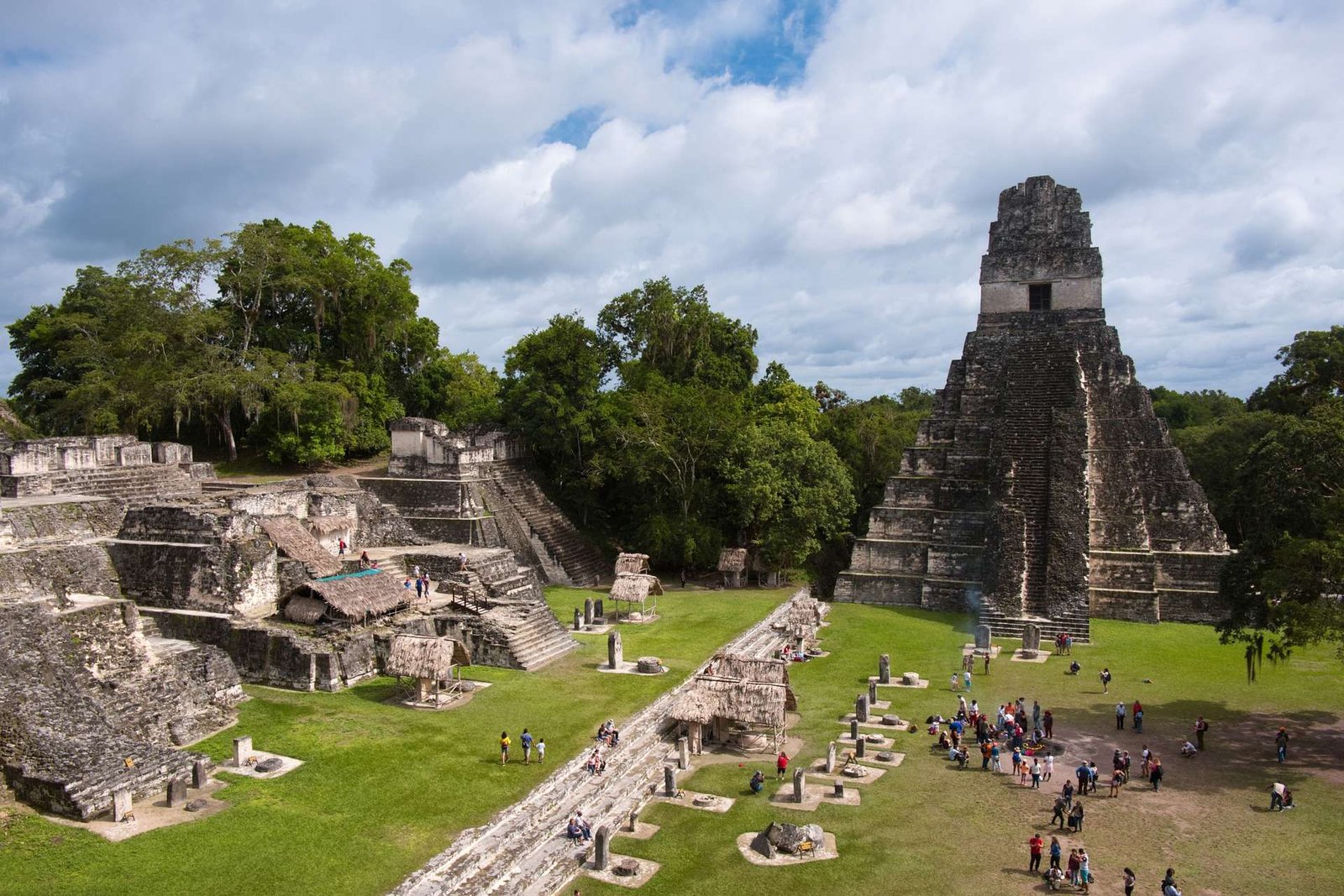Are you a history enthusiast looking to immerse yourself in the captivating stories and significant events of World War II? Look no further! In this article, we will introduce you to the top 10 destinations for World War II history and battlefield tours. These incredible locations offer a unique opportunity to explore historical sites, battlefields, and landmarks that played a crucial role during this global conflict.
Visiting Oskar Schindler Factory – Essential Information
If you’re planning a visit to the Oskar Schindler Factory, here are some essential details to keep in mind:
- Location: Krakow, Poland
- Address: 4 Lipowa Street, 30-702 Krakow
- Opening Hours: The factory is open from 9:00 AM to 8:00 PM daily.
- Tickets: Admission tickets can be purchased at the museum’s ticket office or online. We recommend booking in advance to secure your visit.
Embark on a thought-provoking journey through World War II history by visiting the Oskar Schindler Factory, and gain a deeper appreciation for the bravery and compassion displayed by those who resisted the horrors of the Holocaust.
The Reichstag – Berlin, Germany
The Reichstag in Berlin, Germany played a significant role during World War II. This iconic building, steeped in history, witnessed pivotal moments that shaped the course of the war and its aftermath.
One of the most infamous events associated with the Reichstag is the Reichstag fire in 1933. The fire, claimed to be the work of a Dutch communist, was used as a pretext by the Nazi regime to consolidate their power. Adolf Hitler exploited the incident to suppress political opponents, leading to the suspension of civil liberties and the establishment of Nazi dictatorship.

During World War II, the Reichstag became a propaganda tool for the Nazi regime. The grand architecture and powerful symbolism of the building made it an ideal backdrop for showcasing Nazi grandeur and instilling a sense of superiority in the German population. Nazi leaders exploited the Reichstag’s grandeur to stage elaborate parades and events, effectively using its image for their propaganda campaigns.
Despite its dark history, the Reichstag has seen a remarkable transformation into a symbol of democracy. After the reunification of Germany, the building was extensively renovated and now serves as the home of the German parliament. The Reichstag Dome, a glass dome at the top of the building, offers visitors a breathtaking view of Berlin and serves as a testament to the resilience of democracy.
Book a Reichstag Dome tour and delve into World War II history
Visiting the Reichstag Dome provides a unique opportunity to learn about the building’s fascinating past and its transformation into a symbol of democracy. From the historic events it witnessed to its architectural significance, the Reichstag is a must-visit destination for World War II history enthusiasts.
Immerse yourself in the compelling history of the Reichstag and gain a deeper understanding of this remarkable landmark’s role in World War II. Explore the building’s interior and ascend to the Reichstag Dome to appreciate Berlin’s panoramic views while reflecting on the turbulent times it has endured.
Join a guided tour and hear the captivating stories of the Reichstag’s past, from the dark days of the Nazi regime to its present-day significance as a beacon of democracy. By engaging with its history, visitors can contribute to the important task of preserving the legacy of World War II and promoting peace.
American Cemetery – Colleville-sur-Mer, France
The American Cemetery in Colleville-sur-Mer, France stands as a solemn tribute to the brave soldiers who fought in World War II. Located on the bluffs overlooking Omaha Beach, this cemetery serves as a poignant reminder of the sacrifices made for liberty and the fight against Nazi dictatorship. With 10,000 crosses standing in solemn rows, it is a somber and humbling sight.
As the final resting place of over 9,000 World War II soldiers, the American Cemetery holds a significant place in history. It serves as a powerful reminder of the price of freedom and the courage displayed by those who stormed the Normandy beaches during the D-Day invasion. Walking through the neat rows of white crosses or Stars of David, visitors can reflect on the remarkable bravery and selflessness of these individuals.
Visiting the American Cemetery offers an opportunity to pay respects and honor the memory of those who made the ultimate sacrifice. It is a serene and tranquil place, offering a peaceful setting for quiet contemplation and remembrance.
Those interested in World War II history and military heritage will find the American Cemetery to be an important destination. It embodies the lasting impact of the Normandy invasion and serves as a reminder of the human cost of war. Visitors can explore the visitor center, which provides additional historical context and information about the soldiers laid to rest on these grounds.
Notable Features of the American Cemetery:
- The poignant “Spirit of American Youth Rising from the Waves” statue, depicting a young man rising from the sea.
- The beautifully landscaped grounds, meticulously maintained and providing a tranquil atmosphere.
- The Wall of the Missing, which bears the names of over 1,500 American soldiers whose remains were never found.
“The graves in the American Cemetery at Colleville-sur-Mer are truly worthy of their dead. There is no corner of a foreign field that is more intensely American. No other plot dedicating our sons who made the supreme sacrifice is so hallowed by the American heart, as this.
– General Dwight D. Eisenhower
| Location | Colleville-sur-Mer, France |
|---|---|
| Founded | 1944 |
| Number of Burials | 9,386 |
| Notable Features |
|

Oradour-sur-Glane – France
Oradour-sur-Glane, located in France, is a chilling testament to the Nazi atrocities during World War II. This village, once vibrant and lively, was brutally destroyed by the Nazis, and its 600 innocent inhabitants were mercilessly massacred. Today, Oradour-sur-Glane stands as a haunting historical site, left untouched as a solemn memorial to the victims and a reminder of the horrors of war.
The World War II Massacre
The Oradour-sur-Glane massacre was a horrifying act of violence carried out by Nazi troops on June 10, 1944. The village was targeted by the Nazis as a reprisal against the French Resistance, despite the fact that the Resistance had no presence in Oradour-sur-Glane. The Nazis rounded up the villagers, separating men from women and children, and systematically murdered them. The village was then set ablaze, leaving nothing but ruins.
“The tranquility of this village, wiped out in an instant, is a stark reminder of the atrocities committed during World War II.”
Oradour-sur-Glane serves as a solemn memorial, preserving the remains of the village as they were found after the massacre. Walking through the streets of this ghost town, visitors can see the remnants of buildings and personal belongings, frozen in time. The devastation is a powerful testament to the inhumanity and brutality of Nazi occupation.
Visiting Oradour-sur-Glane
A visit to Oradour-sur-Glane is a solemn and emotional experience. As you walk through the streets, you can’t help but imagine the terror and anguish that engulfed the village on that fateful day. The preserved ruins are a stark reminder of the atrocities committed during World War II and a poignant tribute to the lives lost.
“Oradour-sur-Glane stands as a powerful reminder of the need to remember the victims of Nazi brutality and the importance of standing against hate and prejudice.”
Exploring the village, visitors can also learn more about the events leading up to the massacre and gain a deeper understanding of the impact of World War II on local communities. It is a place of reflection, where visitors can honor the memory of the victims and vow to work towards a more peaceful future.
Warsaw – Poland
Warsaw, the capital of Poland, is a city that carries the scars of World War II destruction. During the war, Warsaw suffered heavily, with over 200,000 inhabitants losing their lives and the city’s monuments and buildings being destroyed by the Nazis.
However, Warsaw has risen from the ashes and stands as a testament to resilience and recovery. Today, the city is home to numerous historical sites that offer a glimpse into its turbulent past. One notable feature found throughout the old town is the presence of memorial plaques, serving as reminders of the tragic events that unfolded.
Exploring Warsaw allows visitors to pay homage to the city’s resilience and learn about the impact of World War II. From the Warsaw Uprising Museum, which commemorates the city’s resistance against Nazi occupation, to the national monuments and restored buildings, there are plenty of opportunities to delve into the history of this remarkable city.

The Normandy American Cemetery and Memorial, located above Omaha Beach, is a solemn tribute to the 9,387 American soldiers who lost their lives during the D-Day landings and subsequent operations in the area. The cemetery offers breathtaking views of the beach and the English Channel. Walking amongst the perfectly aligned rows of white crosses and Stars of David serves as a poignant reminder of the sacrifices made to secure freedom and peace.
| Location: | Normandy, France |
|---|---|
| Significance: | One of the main landing sites during the Normandy invasion (D-Day) in World War II |
| Historical Context: | Part of the larger Allied operation to liberate Western Europe from Nazi occupation |
| Importance: | Symbolizes the courage and sacrifice of the Allied troops who fought on the beaches of Normandy |
| Visit Recommendations: | Explore the nearby Normandy American Cemetery and Memorial for a deeper understanding of the battle |
Visiting Omaha Beach provides a powerful reminder of the bravery, determination, and ultimate sacrifice displayed by the Allied forces in their fight against tyranny during World War II. It offers a unique opportunity to pay tribute to the heroes who laid down their lives for the liberation of Europe.
Yalta – Crimea
Experience the historic significance of Yalta, Crimea, as we delve into the pivotal moment it played in World War II history. The Yalta Conference, held in 1945, aimed to discuss the post-war reorganization of Europe, shaping the world as we know it today.
Explore the magnificent Livadia Palace, located in Yalta, where the conference took place. This elegant palace witnessed the negotiations and decisions made by world leaders that would determine the course of history. Immerse yourself in the atmosphere of the conference and gain a deeper understanding of the events that unfolded.
Yalta offers more than just a glimpse into the political discussions of the past. It is a region known for its breathtaking beauty and rich history. From the stunning shoreline of the Black Sea to the picturesque Crimean Mountains, Yalta is a destination that captivates visitors with its natural wonders and cultural heritage.
Discover the historical sites in Yalta that bear witness to the events of World War II, as well as other notable landmarks and attractions. Embark on guided World War II tours to explore the remnants of fortifications and witness the lasting impact of the war on the region.
Plan your visit to Yalta and embrace the opportunity to gain a unique insight into this significant moment in World War II history. Experience the beauty, history, and resilience of Yalta in Crimea, a destination that offers both educational and memorable journeys through time.
Conclusion
In conclusion, exploring the top 10 destinations for World War II history and battlefield tours opens the door to understanding the past and paying tribute to those who sacrificed their lives during the war. From the iconic Anne Frank House in Amsterdam to the historic beaches of Normandy, these destinations offer a unique and unforgettable journey through World War II history.
Whether you visit the solemn Holocaust Memorial in Berlin or the impactful Oskar Schindler Factory in Krakow, each site provides a deeper understanding of the events that shaped our world. Walking through the corridors of Auschwitz in Poland or reflecting on the bravery of soldiers at the American Cemetery in Colleville-sur-Mer, you’ll gain a firsthand experience of the significant historical sites and landmarks of World War II.
Plan your trip now and embark on a memorable journey into our past. These important destinations will not only broaden your knowledge of World War II but also leave a lasting impact on your heart and mind. So, pack your bags and let the World War II history and battlefield tours take you on an extraordinary adventure through time.
FAQ
What is the significance of visiting the Anne Frank House in Amsterdam, Netherlands?
Visiting the Anne Frank House allows visitors to learn about the life of Anne Frank, a young Jewish girl who documented her experiences during World War II in her diary. It offers a powerful insight into the Jewish persecution during the Holocaust and provides a unique opportunity to explore the house where Anne and her family hid from the Nazis.
What is the purpose of the Holocaust Memorial in Berlin, Germany?
The Holocaust Memorial serves as a tribute to the victims of the Jewish genocide during World War II. It acts as a reminder of the atrocities committed by the Nazi regime and the importance of remembering and learning from the past. It offers visitors a chance to reflect on the immense suffering and show their commitment to never forgetting.
What can visitors learn from a visit to Auschwitz in Poland?
Auschwitz is a chilling reminder of the horrors of World War II. As a former concentration and death camp, it stands as a testament to the atrocities committed by the Nazis. Visitors can explore the site and learn about the unimaginable suffering inflicted upon millions of innocent people. It serves as a solemn reminder to never forget the victims of the Holocaust.
Why is the Oskar Schindler Factory in Krakow, Poland a must-visit for World War II history enthusiasts?
The Oskar Schindler Factory is a must-visit for those interested in World War II history because it offers a unique perspective on the humanitarian efforts that took place during the Holocaust. Oskar Schindler, a German industrialist, saved over 1,000 Jews by employing them in his factory. Exploring the factory allows visitors to learn about Schindler’s courageous actions and the lives he saved.
What is the historical significance of The Reichstag in Berlin, Germany?
The Reichstag played a significant role during World War II. Visitors can discover the history behind the infamous Reichstag fire and its consequences. The building, now home to the German parliament, was once utilized for Nazi propaganda projects. Booking a Reichstag Dome tour allows visitors to learn about its fascinating past and its transformation into a symbol of democracy.
What does the American Cemetery in Colleville-sur-Mer, France represent?
The American Cemetery is a solemn tribute to the brave soldiers who fought in World War II. It serves as a reminder of the sacrifices made for liberty and the fight against Nazi dictatorship. With 10,000 crosses standing in solemn rows, visitors can pay their respects and reflect on the courage of those who came from the other side of the world to liberate Europe.
What is the significance of Oradour-sur-Glane in France?
Oradour-sur-Glane is a haunting reminder of the atrocities committed by the Nazis during World War II. This village was destroyed, and its 600 inhabitants massacred as a result of the Nazi occupation. As a memorial to the victims, the village was left untouched and serves as a powerful reminder of the horrors of war.
How was Warsaw, Poland impacted by World War II?
Warsaw, the capital of Poland, was heavily impacted by World War II. More than 200,000 inhabitants were killed, and the city’s monuments and buildings were destroyed by the Nazis. Today, commemorative plaques throughout the old town serve as a testament to the tragic events that took place. Exploring Warsaw allows visitors to learn about its resilience and recovery after the war.
What is the historical significance of Omaha Beach in Normandy, France?
Omaha Beach is a significant World War II landmark. It played a crucial role during the Normandy invasion and was one of the landing sites for Allied forces. Visitors can pay a visit to nearby towns like Caen or Saint-Laurent-sur-Mer and immerse themselves in the history of the liberation of Europe.
What can visitors learn from a visit to Yalta in Crimea?
Yalta offers a unique insight into World War II history through the Livadia Palace, where the Yalta Conference took place in 1945. The conference aimed to discuss the post-war reorganization of Europe. Exploring the palace allows visitors to learn about the decisions that shaped the world after the war and offers a deeper understanding of this historic event.



